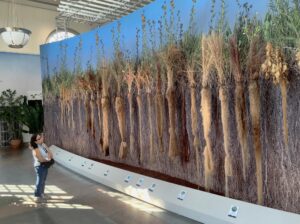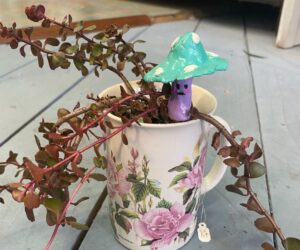 Gypsybeach Treasured Kreations is hosting a Mushroom Plant Pal class this month. It is a two-part class with the first portion taking place on August 18th and the second on August 25th. The first class will focus on clay sculpting while planting will take place during the second class. Both courses will be from 4-5 pm. The class is only $25 for both sessions! Class includes a planter and succulent. Call Kathie at (904) 451-3071 to pre-register and secure your spot. Learn more by visiting the Facebook event page here.
Gypsybeach Treasured Kreations is hosting a Mushroom Plant Pal class this month. It is a two-part class with the first portion taking place on August 18th and the second on August 25th. The first class will focus on clay sculpting while planting will take place during the second class. Both courses will be from 4-5 pm. The class is only $25 for both sessions! Class includes a planter and succulent. Call Kathie at (904) 451-3071 to pre-register and secure your spot. Learn more by visiting the Facebook event page here.
Category: Education
Jackson County Turns 200
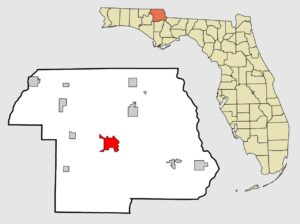 Jackson County is turning 200, and the city is hosting a Bicentennial Celebration Festival on August 13th. The Festival will include food trucks, games, live music, a farmers’ market, history, inflatables, vendors, and more! Entry to the festival is free, as are the games. However, be sure to bring money for the food trucks, farmers’ market, and merchandise vendors. Parents, please note that some kid-friendly activities involve water – plan accordingly. For more info: email darbyshired@jacksoncountyfl.gov or contact the County Administration at (850) 482-9633.
Jackson County is turning 200, and the city is hosting a Bicentennial Celebration Festival on August 13th. The Festival will include food trucks, games, live music, a farmers’ market, history, inflatables, vendors, and more! Entry to the festival is free, as are the games. However, be sure to bring money for the food trucks, farmers’ market, and merchandise vendors. Parents, please note that some kid-friendly activities involve water – plan accordingly. For more info: email darbyshired@jacksoncountyfl.gov or contact the County Administration at (850) 482-9633.
On This Day in History
On July 29th in 1958, the National Aeronautics and Space Act (NASA) was established. The establishment of NASA was largely a response to the launch of Sputnik and the beginning of the ‘space race.’(1) In the 1960s, NASA had the budget, the political will, and the momentum provided by the Cold War to create a moon program that lead to Americans landing on the moon in the small span of eight years. Nowadays, there are a few motivations driving the interest in American space travel: national prestige, geopolitical power, economic opportunity, and scientific knowledge. 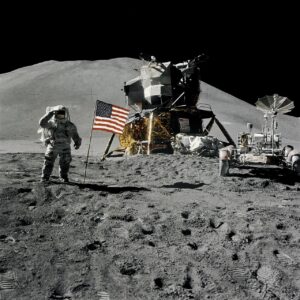
Unfortunately, the private sector of space travel (think Jeff Bezos and Elon musk) is receiving more funding than the public sector aka NASA. This is largely due to an increasing sense of ambivalence towards space travel amongst the majority of America; space travel is subjected to the whims of politics and there are more immediate concerns planetside for citizens to worry about. However, NASA does have a number of exciting research programs and missions in place. Additionally, there is a current moon effort named Artemis. NASA recently announced that they are aiming to send a crew to orbit the moon in May 2024, and land astronauts on the surface in 2025. American astronauts haven’t been on the moon since 1972, and Artemis is designed to allow them to plant another flag, build habitats, and apply new knowledge of the lunar surface to use for future missions to Mars.
Monarch Butterflies Now Endangered
 On Thursday, the International Union for the Conservation of Nature added the migratory monarch butterfly to the “red list” of threatened species.(1) One of the most recognizable butterflies in the world, the monarch butterfly (Danaus plexippus) is famous for its seasonal migration. Millions of monarchs migrate south from the United States and Canada to California and Mexico for the winter.(2)
On Thursday, the International Union for the Conservation of Nature added the migratory monarch butterfly to the “red list” of threatened species.(1) One of the most recognizable butterflies in the world, the monarch butterfly (Danaus plexippus) is famous for its seasonal migration. Millions of monarchs migrate south from the United States and Canada to California and Mexico for the winter.(2)
It has distinctive orange wings with black lines and white dots. Monarchs live an average of 6-8 months, weigh under 0.001 ounces, and have a medium wingspan of 3.9 inches. Their move to the endangered list means they are just two distinctions from extinction. The primary causes of their move to the red list are loss of habitat and climate change. Want to help the monarch population during this critical time?
The number one thing you can do is plant native milkweed and supplementary plants. There is a number of native milkweeds to choose from – visit UF|IFAS’s Milkweed Species Native to Florida for the complete list. However, there are milkweeds that are essential for monarch butterflies to be able to complete their life cycle within your garden. Female monarchs prefer to lay on swamp milkweed (Asclepias incarnata) and common milkweed (A. syriaca).(3)
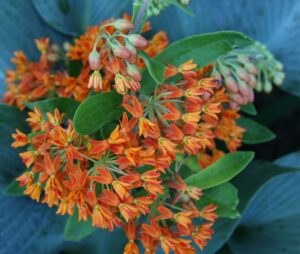
Milkweed is crucial to the diet of monarchs; their distinctive coloring is not an invitation to be eaten but a warning to predators that they are poisonous. They have evolved to not only tolerate but use the toxicity naturally occurring in milkweed to protect themselves by storing it in the veins. Monarchs will feast on all milkweed varieties however, butterfly weed (A. tuberosa) is native to Florida, widely available, and has beautiful flowers.
Supplementary plants are plants of other species that should be planted around milkweed to assist in a healthy ecosystem. These are plants that should be chosen based on each individual location’s soil, sun, and water retention rates as well as hardiness zone. Please remember to always choose native plants to increase the health of your soil and the natural benefits of your garden.
Make Your Yard Florida Friendly
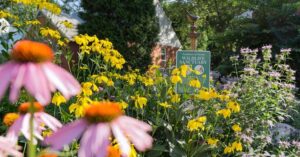 Next Saturday, July 30th, Native Nursery of Tallahassee is hosting a Florida-Friendly Landscaping class. From 10-11 am, learn how to help protect Florida’s environment and make your yard a wildlife habitat. Rachel Mathes will teach the class how to use the Nine Principles of Florida-Friendly Landscaping, her goals for the program, and then guide the class through the steps to creating a more sustainable yard.
Next Saturday, July 30th, Native Nursery of Tallahassee is hosting a Florida-Friendly Landscaping class. From 10-11 am, learn how to help protect Florida’s environment and make your yard a wildlife habitat. Rachel Mathes will teach the class how to use the Nine Principles of Florida-Friendly Landscaping, her goals for the program, and then guide the class through the steps to creating a more sustainable yard.
Please note that registration is required via phone order. The fee is $5 and holds your spot in the class as it is limited to 15 participants. Please call (850) 386-8882 to pre-register. PARKING: Please use driveway next door to the nursery with ‘Workshop Parking’ sign seen from Centerville Road.
Navarre Beach Sea Turtle Conservation Center
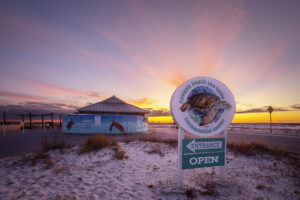 The Navarre Beach Sea Turtle Conservation Center (NBSTCC) is “Giving sea turtles more tomorrows through conservation, education, and research.” A nonprofit organization founded in 2013, the NBSTCC is a working conservation and education center. They currently welcome walk-in guests at a reduced capacity Tuesday through Saturday, 10 am – 4 pm. Please note that, due to the reduced capacity, there may be a waitlist; check their Facebook page here for current information.
The Navarre Beach Sea Turtle Conservation Center (NBSTCC) is “Giving sea turtles more tomorrows through conservation, education, and research.” A nonprofit organization founded in 2013, the NBSTCC is a working conservation and education center. They currently welcome walk-in guests at a reduced capacity Tuesday through Saturday, 10 am – 4 pm. Please note that, due to the reduced capacity, there may be a waitlist; check their Facebook page here for current information.
NBSTCC is a predominately volunteer-run organization that operates in a 2,010-square-foot conservation and education center. Learn more about volunteering with the organization HERE. Alongside walk-in visits and scheduled private tours, NBSTCC also offers paid experiences: Painting Tortoise Tracks, Honorary Animal Care Team Member, Shark School, and Shark Tooth Treasure Hunt. Visit the NBSTCC website here for more information on experiences, the organization, and turtle conservation.
Wetlands Nature Hike in Jacksonville
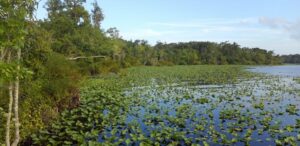 Clay County Parks and Recreation is hosting a wetland tour Saturday, July 16th. The tour will be guided by one of the Camp Chowenwaw Park naturalists. They will give information on Clay County’s wetlands ecosystem. The wetland tour will take place at Camp Chowenwaw Park at 1517 Ball Road, Green Cove Springs. Everyone will meet at 9:30 am by the picnic area to the left of Big Cabin. Bug spray, water, and closed-toe shoes are highly recommended. Registration is REQUIRED and free! Space is limited to 20 people. Click here to register.
Clay County Parks and Recreation is hosting a wetland tour Saturday, July 16th. The tour will be guided by one of the Camp Chowenwaw Park naturalists. They will give information on Clay County’s wetlands ecosystem. The wetland tour will take place at Camp Chowenwaw Park at 1517 Ball Road, Green Cove Springs. Everyone will meet at 9:30 am by the picnic area to the left of Big Cabin. Bug spray, water, and closed-toe shoes are highly recommended. Registration is REQUIRED and free! Space is limited to 20 people. Click here to register.
Native Grasses
Native grasses are an essential topic that many don’t consider. Many of the green pasture grasses you see today are actually from other countries and contain 10x the amount of chemicals as farmland.(1)
Native grasses are more cost-efficient as they require far less maintenance and promote beneficial wildlife. Natives have existed in the ecological landscape for so long that they have adapted to the soil, terrain, sunlight, and moisture conditions. This means homeowners won’t waste as much time and money watering, cutting, or reseeding. Reseeding is a natural aspect of native grasses because they are perennial which means they self-seed each year. They are more prepared to deal with natural droughts because their roots reach far, far down into the ground (see photo). This also means native grasses are beneficial for soil erosion; plant native grasses near pond edges and more. Their far-reaching roots also assist in maintaining healthy soil. Furthermore, native grasses are naturally resistant to many of the local pests and diseases that many homeowners would usually treat with pesticides. Not only does using fewer pesticides save you money but it also means a healthier ecosystem – less poison means more pollinators, healthier soil, and less chemical runoff that can affect human and animal lives.
Learn more about native grasses, groundcover, and lawngrasses HERE at the UF|IFAS extension website.
Pollinator Class in Fountain
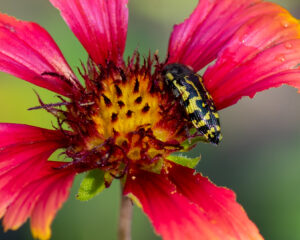
June 20-26th is National Pollinator Week! The week is dedicated to bringing awareness and support to all types of pollinators from bees to wasps and more. Sandhills Native Nursery is hosting a special two-day Pollinator Class this weekend to celebrate.
Visit the nursery amongst the beautiful sandhills of Fountain this Friday or Saturday to learn more about pollinators, see the array of glorious summer native flowers blooming in the heat, and receive a special 20% off your total purchase order (valid day of class only). The nursery encourages you to come prepared for the heat: bring sunscreen, a hat, neck fans, fluids, or anything else you may need to help keep you cool! There will be cold water and Gatorade on hand to refill empty bottles and a few standing fans. The class will be held in the shady areas available at the nursery to help prevent anyone from overheating.
Visit the official Sandhills Native Nursery Facebook page to stay up-to-date with events, hours, and more!
Nationwide Launch of 988
In one month, on July 16th, a new hotline for mental health will launch nationwide! Congress mandated the launch of the 988 emergency number in 2020. However, financial funding was left in the hands of each individual state which delayed its establishment. 
Since 2008, suicide has ranked as the tenth leading cause of death in the United States.(1) The 988 hotline is designed to assist in suicide prevention and other mental health emergencies. It will provide 24/7, free, and confidential support to people in suicidal crisis or emotional distress works.
